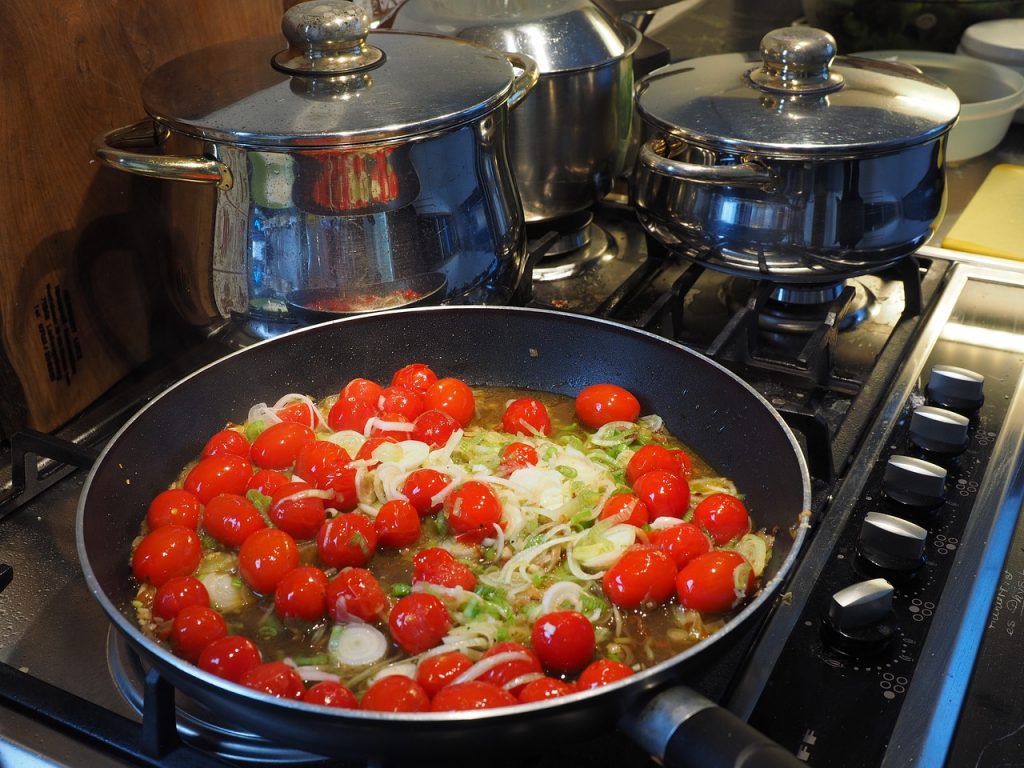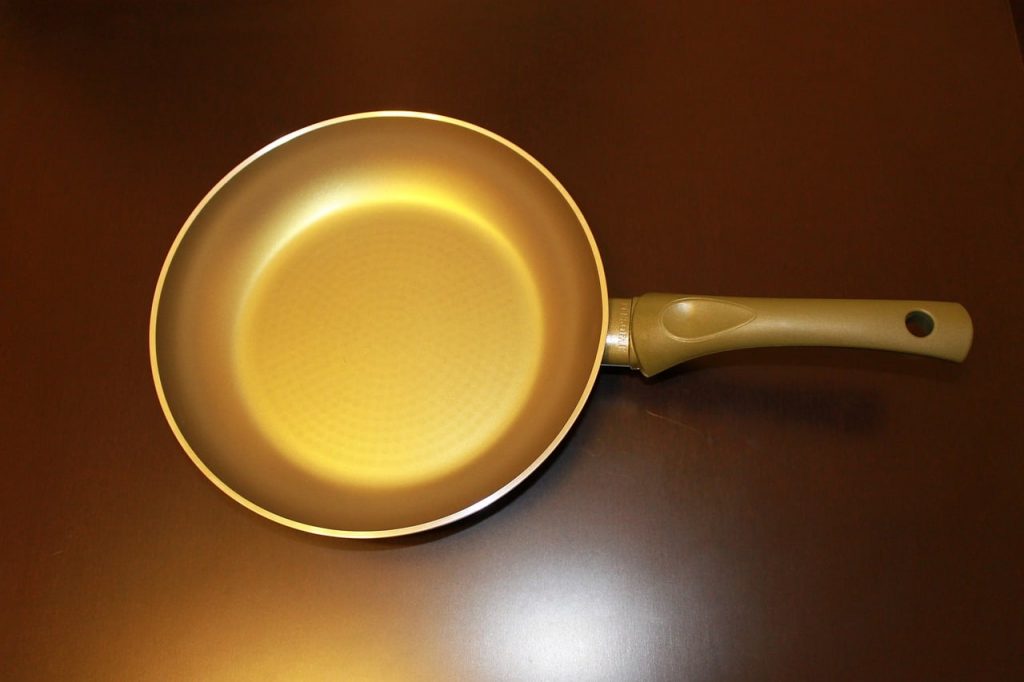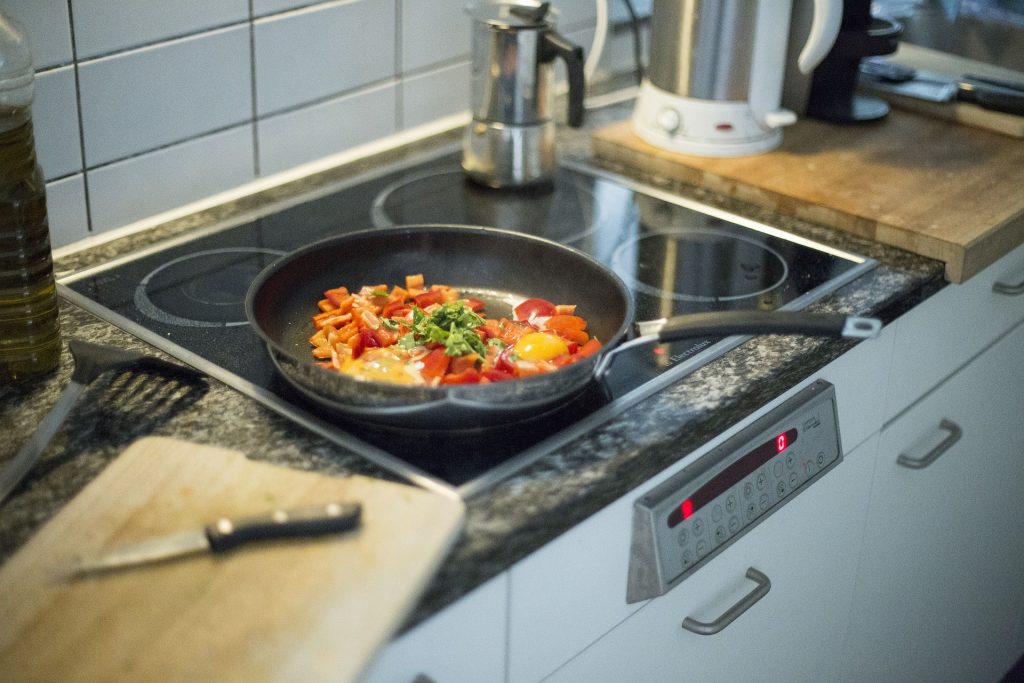When ‘non-stick cookware’ was introduced into the markets decades ago, it was done with the notion that it would ease the consumers’ cooking experience. Cooking in non-stick cookware is deemed to have several advantages, primary among them being the fact that it needs less oil. What makes non-stick, non-stick is a coating of polytetrafluoroethylene which is responsible for allowing the food to be cooked, browned, sauteed for longer, without sticking to the base of the pan. Interestingly, because Teflon was the most popular brand for these polytetrafluoroethylene coatings, most non-stick cookware began to be referred to as Teflon coated. With the demand sky-rocketing each year, it is safe to say that non-stick cookware lived up to its promises. But only till concerns about its Teflon coating were raised, and side-effects of PFOA exposure were brought into the discussion. But, though most of those fears have been put to research, can non-stick cookware still be labeled as the safest among the rest in the market? We find out.
Related Reading:
Mishry Reviews: The Best Stainless Steel Frying Pan For Everyday Use
Table of Contents
What Is A Non-Stick Cookware
(Teflon Coated And Ceramic)?
The chief reason behind the very ‘non-sticky’ property of the non-stick cookware is the external coating of Teflon, which for many years was manufactured with the help of a chemical called PFOA (Polyfluorooctanioc Acid), a chemical that has been linked with a kidney and liver toxicity. Though most non-stick cookware which is coated with Teflon has been PFOA-free since 2013 (1), it is still important to take precautions while cooking with this polymer-coated cookware as it can be linked some severe side-effects. Cooking in a burnt up Teflon cookware can cause a serious flu-like disease, which is quite hard to spot since it has similar symptoms as the flu.
However, a more recent non-stick cookware-type, the cookware made out of ceramics, have flooded the market as a more healthier alternative, but these are far more expensive as compared to Teflon cookware.
Before we go any further, let’s just take a closer look at the risks of Teflon cookware and what you can do in order to minimize its minimize them.
Also Read: Chopping Boards: A Buying Guide For Getting Your Hands On The Best
How Harmful Is Teflon?
As we have mentioned before, the main ingredient in the manufacturing of Teflon that is responsible for its backdrop is PFOA (Polyfluorooctanioc Acid). Though most of the particles of PFOA are removed after it comes in contact with high-heat (a part of manufacturing), there have been studies that shows the emission of PFOA particles from the surface of the cookware (2).
The non-stick coating can break-off or get chipped at high temperatures, though it might not mix-up with the food that you cook, they can end up contaminating the air, as it turns into vapor and can be quite toxic to breathe (3).
The disease caused by this toxicity is commonly known as polymer fume fever, which as we have pointed out, has symptoms that are quite similar to that of a viral-flu (4), thus making it quite hard to spot.
Overheated non-stick cookware is linked with various disorders and can be harmful to multiple body organs such as lungs and kidneys. But, though the adverse effects of using this non-stick cookware seem to be quite serious if used with precautions, a Teflon coated cookware could prove to be a rather convenient, easy to clean, and a more durable product available in the market.
Also Read: Best Water Bottles| Features And Factors That Really Matter
Precautions Taken In Order To Minimize Teflon’s Harmful Side-Effects
These are some of the most important procedures that you have to follow while cooking with non-stick cookware in order to reduce its ability to adversely affect your health.
1. Preparation
At the start when the pan is empty, make sure that you don’t preheat it, for the overheating of the coating can release toxin fumes.
2. While Cooking
There are various things that you must take note of
while cooking in these types of cookware.
First, there must be appropriate ventilation in your kitchen. Make sure that the exhaust fan is properly functional or the window is open, for it would help in getting rid of any toxic fumes arising from the over-heating of the coating.

Do not use any sharp spoons to stir the food while cooking, for they can easily scrape off the surface of the pan, and can mix coating along with the food over prolonged usage.
3. After Cooking
After every session, the coated cookware must be thoroughly washed and rinsed. Make sure that you use a cleaner that has a soft and smooth surface such as a sponge; a metal scrub can form scratches on the inner surface of the pan, which would result in the elimination of the coating. Furthermore, the presence of scratches and cracks on the cookware’s surface can act as a breeding ground for bacteria if not washed properly.
It is also important to regularly change your cookware after the non-stick surface is scratched.
Other Alternative Cookware-Types
Throughout the history
of cooking, there have been various materials that have come in use, and have
been quite efficient for the manufacturing of cookware. Here is the list of
some of the most widely used types of cookware all across the world.
1. Stainless Steel Cookware
Without a doubt, this anti-corrosive cookware is the topmost contender for the spot of the most popular cookware-type. Made by the combination of two metals namely chromium and nickel, cookware made out of stainless steel is more durable, a property that makes it highly resistant to scratches, thus it can be considered quite beneficial when taking into account its hygienic factor.
2. Copper Cookware
Being a great conductor of heat, cookware which is made out of copper can be highly beneficial in fastening the process of cooking. The responsiveness (the ability to respond to the change in temperature) of copper cookware is higher when compared to any other cookware, thanks to its highly conductive nature.
3. Ceramic Cookware
Though ceramic cookware is also non-stick in nature, it can, on the other hand, prove to be a healthier alternative. Just like in Teflon coated cookware, you must avoid cooking at high temperatures when using a ceramic pan too. These are new in the market, studies are yet to be done for determining exactly how the use of ceramic cookware affects the consumers’ health.

4. Cast Iron
There is no other material that can be more durable than cast iron itself. Though a poor conductor of electricity, a cast iron cookware is quite heavy and can be easily used to control heat, thus making it more efficient for slow cooking.
5. Aluminium
Unlike the cast iron cookware, the ones that are made out of aluminum are lighter, and like copper, it is highly responsive and can be used for fastening the process of cooking. Due to its lightweight, aluminum cookware mostly comprises of large units roasting pans or barbeque grills.
Choosing the perfect cookware that helps you in more efficient and effective cooking is an important task. It is required for you to make a more informed decision keeping your and your family’s health in mind rather than going with what you think is more convenient.




